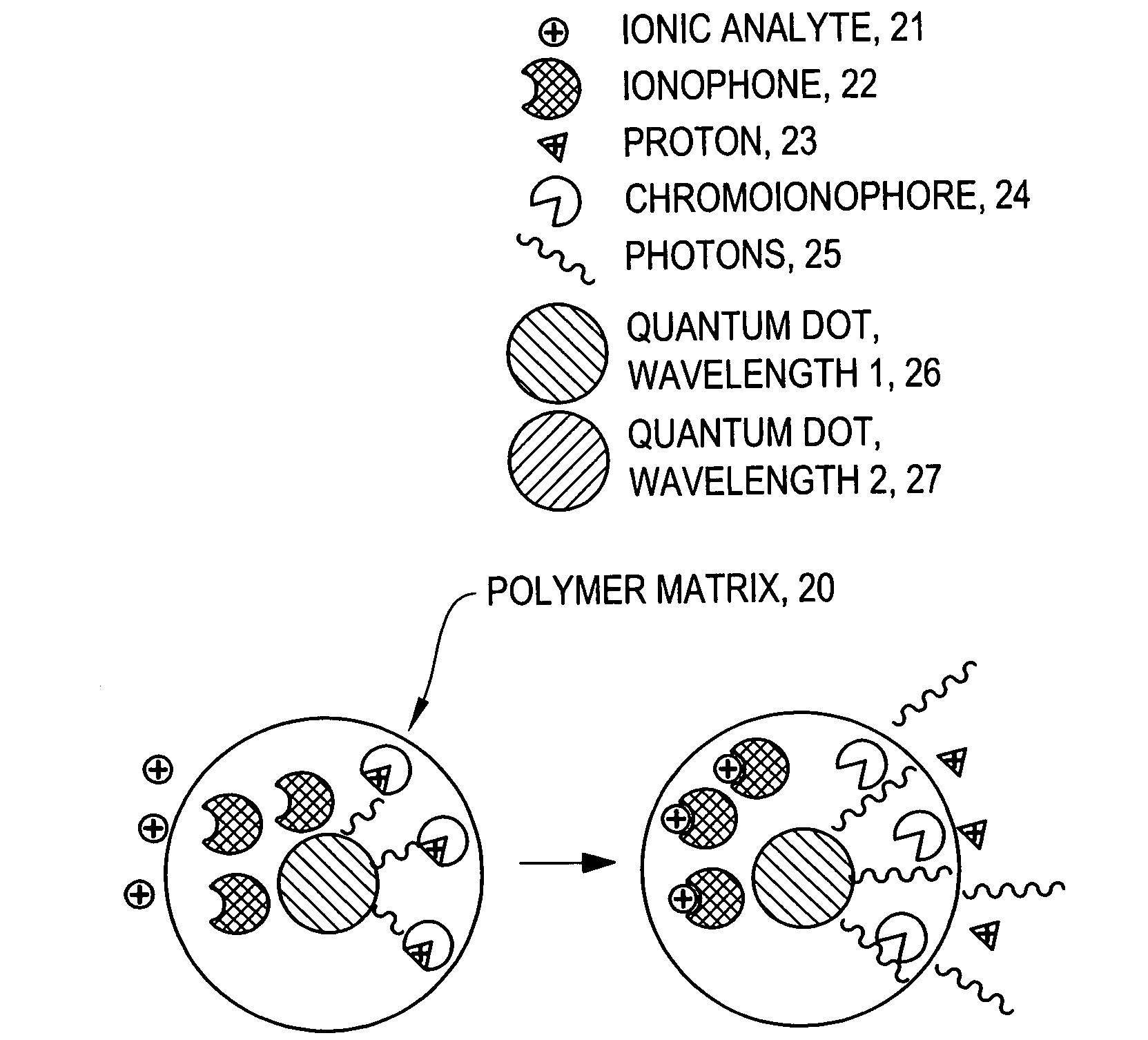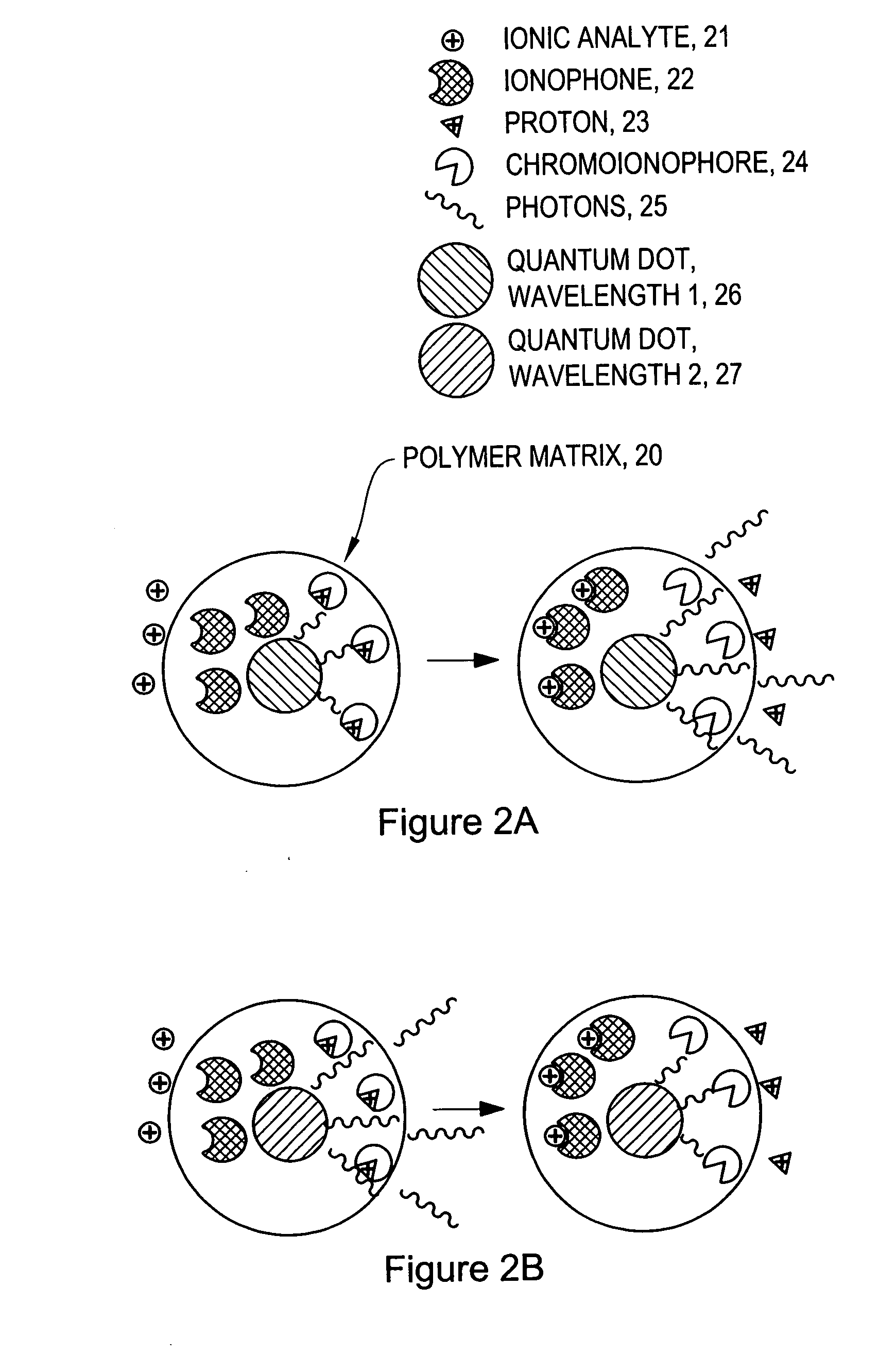Ion-selective quantum dots
- Summary
- Abstract
- Description
- Claims
- Application Information
AI Technical Summary
Benefits of technology
Problems solved by technology
Method used
Image
Examples
examples
[0075]Ion-Selective Polymer Solution. The ion-selective polymer solution was made from the following components: 30 mg High Molecular Weight Polyvinyl Chloride, 60 mg Bis-2-Sebacate, 0.1 mg Sodium Ionophore X, 0.1 mg Sodium tetrakis[3,5-bis(trifluoromethyl)phenyl]borate, and 0.1 mg Chromoionophore I. The combined reagents were stirred in 500 μL of tetrahydrofuran (THF) to afford a homogenous solution.[0076]Ion-Selective Sensor Fabrication. Quantum dots (ITK organic 655, Invitrogen) were flocculated in a methanol / isopropanol mixture with the addition of toluene in a 1:1 (v:v) ratio of toluene:quantum dot solution. The supernatant was removed and the quantum dots were resuspended in THF containing 3.3 mM 1-decanethiol. To the quantum dot solution (0.2 nMoles) was added the ion-selective polymer solution (17.2 nMoles Chromoionophore I, 50 μl) and the mixture was stirred.[0077]Immobilized Polymer Matrix of Sensors. To form an immobilized polymer matrix of sensors, 1 μl of the polymer / qu...
PUM
 Login to View More
Login to View More Abstract
Description
Claims
Application Information
 Login to View More
Login to View More - R&D
- Intellectual Property
- Life Sciences
- Materials
- Tech Scout
- Unparalleled Data Quality
- Higher Quality Content
- 60% Fewer Hallucinations
Browse by: Latest US Patents, China's latest patents, Technical Efficacy Thesaurus, Application Domain, Technology Topic, Popular Technical Reports.
© 2025 PatSnap. All rights reserved.Legal|Privacy policy|Modern Slavery Act Transparency Statement|Sitemap|About US| Contact US: help@patsnap.com



